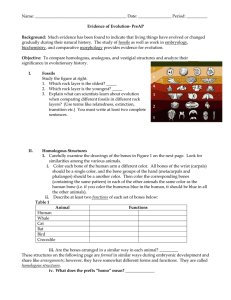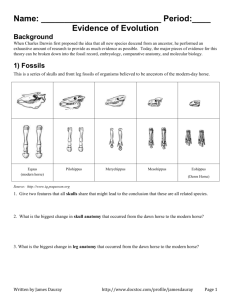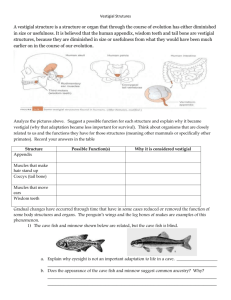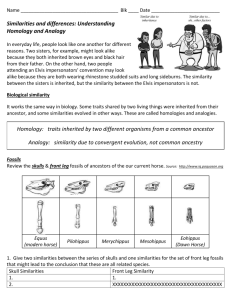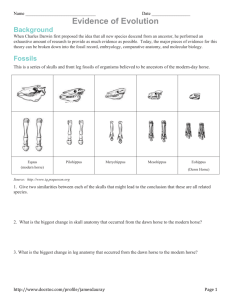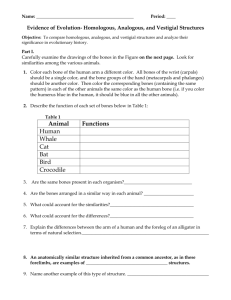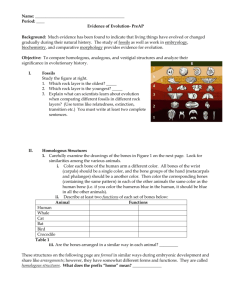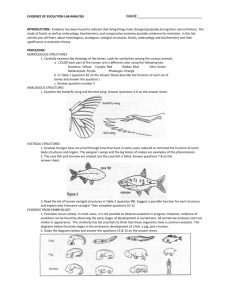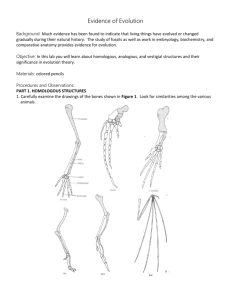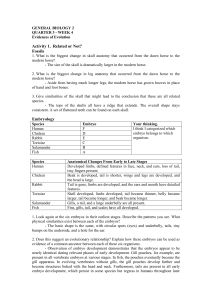Comparative Anatomy Worksheet: Homologous Structures
advertisement
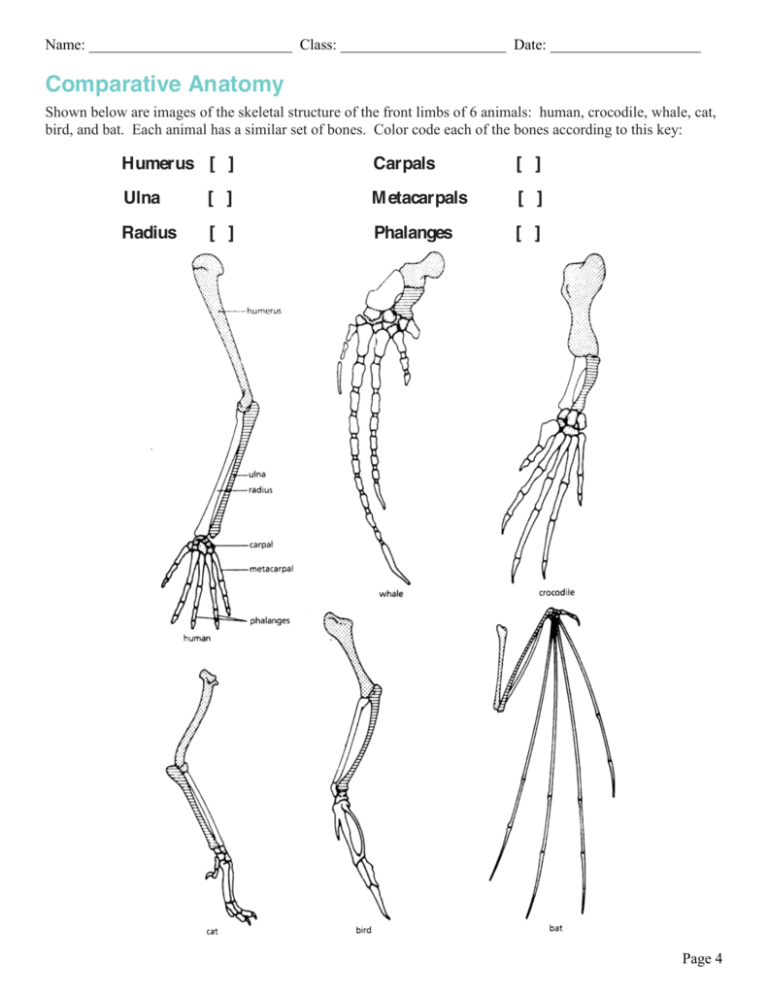
Name: ___________________________ Class: ______________________ Date: ____________________ Comparative Anatomy Shown below are images of the skeletal structure of the front limbs of 6 animals: human, crocodile, whale, cat, bird, and bat. Each animal has a similar set of bones. Color code each of the bones according to this key: Humerus [ ] Carpals [ ] Ulna [ ] M etacarpals [ ] Radius [ ] Phalanges [ ] Page 4 Name: ___________________________ Class: ______________________ Date: ____________________ For each animal, indicate what type of movement each limb is responsible for. Animal Primary Functions Human Using tools, picking up and holding objects Whale Cat Bat Bird Crocodile Compare the skeletal structure of each limb to the human arm. Relate the differences you see in form to the differences in function. Animal Comparison to Human Arm in Form Comparison to Human Arm in Function Whale Whale has a much shorter and thicker humerus, radius, and ulna. Much longer metacarpals. Thumb has been shortened to a stub. The whale fin needs to be longer to help in movement through water. Thumbs are not necessary as the fins are not used for grasping. Cat Bat Bird Crocodile Page 5 Name: ___________________________ Class: ______________________ Date: ____________________ Compare the anatomy of the butterfly and bird wing below. 1. What is the function of each of these structures? 2. How are they different in form? Give specific differences. Compare the overall body structure of the cave fish and the minnow below. 1. What is the biggest, most obvious difference between the body structure of these two fish? 2. Assume the two fish came from the same original ancestor. Why might the cave fish have evolved without eyesight? 3. What kind of sensory adaptation would you hypothesize the cave fish has to allow it to navigate in a cave, including catching and eating food? Page 6 Name: ___________________________ Class: ______________________ Date: ____________________ You have now studied three different types of anatomical structures: x Homologous structures show individual variations on a common anatomical theme. These are seen in organisms that are closely related. 1. Give an example of a homologous structure from this activity: x Analogous structures have very different anatomies but similar functions. These are seen in organisms that are not necessarily closely related, but live in similar environments and have similar adaptations. 2. Give an example of an analogous structure from this activity: x Vestigial structures DUHDQDWRPLFDOUHPQDQWVWKDWZHUHLPSRUWDQWLQWKHRUJDQLVP¶VDQFHVWRUVEXWDUH no longer used in the same way. 3. Give an example of a vestigial structure from this activity: 4. Below are some vestigial structures found in humans. For each, hypothesize what its function may have been. Structure Possible function? Wisdom teeth Appendix Muscles for moving the ear Body hair Little toe Tailbone 5. How are vestigial structures an example of evidence of evolution? Page 7
